What You Didn't Know About Green Beans
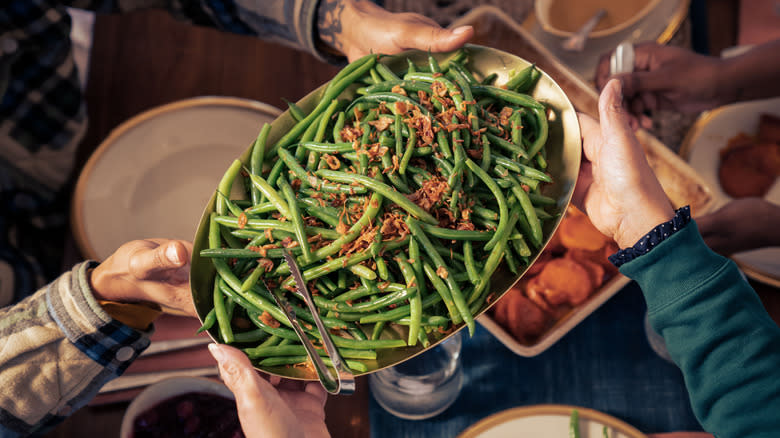
Green beans aren't just misnamed -- they're also full of surprises. For starters, they're not truly beans, and they're not always green. Officially known as Phaseolus vulgaris, green beans go by many names. In some circles, they're called snap beans or snaps, a nod to the "snap" of a fresh, crunchy pod. In others, they're haricots verts, which is French for, you guessed it, green beans. And some of us still call them string beans, a name that harkens back to older varieties with long, fibrous, and annoying threads.
No matter what you call them, green beans are popular in a wide variety of countries and cultures, and eaten in many different ways. They've earned Guinness World Records, flown to space, dressed up in vibrant colors, imitated snakes, risen to Thanksgiving stardom thanks to a soup can label's recipe, overcome a stringy past, and even helped new mothers with breast milk production. If you've always "bean" curious about green beans, grab a fork and let's dig in.
Read more: Mistakes You're Making With Your Corn On The Cob
Green Beans Set World Records
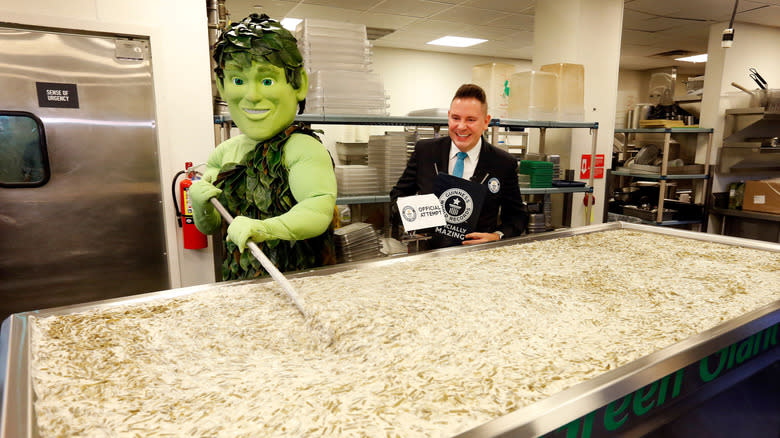
Back in 1996, a green-thumbed gardener in North Carolina pulled off a feat that would make even Jack's magic beanstalk jealous. H. Hurley grew a green bean that stretched an astonishing 48.75 inches -- that's over 4 feet, considerably longer than the longest bat allowed in Major League Baseball. Well over a quarter century later, this impressive bean still holds the Guinness World Record for the longest green bean ever grown.
That lengthy marvel from North Carolina isn't the only green bean to grace the Guinness World Record's archives. In 2019, Jolly Green Giant (the mascot of the Green Giant frozen and canned vegetable company) helped stir up hundreds of thousands of green beans from 1,069 cans of Green Giant Cut Green Beans. Ten chefs combined those green beans with 485 cans of mushroom soup, 65 quarts of milk, and 95 pounds of French fried onions. After eight hours of prepping and cooking, a massive serving of green bean casserole was ready. Weighing in at 1,009 pounds, this colossal casserole earned the Guinness World Record for the largest serving of green bean casserole ever created. While basking in veggie glory, Green Giant partnered with Citymeals on Wheels to deliver a taste of the record-breaking achievement to 3,000 seniors in New York City.
Green Beans Shine Amongst The Stars

On a mission to boost morale and add a little flavor to the lives of astronauts, NASA employed celebrity chef Emeril Lagasse. He created recipes for the crew of the Space Shuttle Discovery in 2006. Among the five menu items? You guessed it -- green beans (with garlic). Even though texture can be a bit of a challenge when you're dining in microgravity, Lagasse's green beans managed to maintain an impressive degree of crispness.
The green bean's journey through the cosmos eventually took it to a very special Thanksgiving on the International Space Station. In 2008, Expedition 18 crew members celebrated Thanksgiving with smoked turkey, candied yams, and green beans (with mushrooms). Green beans make an ideal space food since they're packed with nutritional benefits and easy to prepare. Those are big wins when you're living in a tin can, hurtling through the void at thousands of miles per hour.
But NASA isn't content to just serve up freeze-dried veggies. Researchers are testing their green thumbs with experiments to see how green beans grow under different gravity conditions. Spoiler alert: Turns out green beans do just fine with a lighter touch of gravity, which could drastically change the outlook of long-term space missions. After months of eating nothing but dehydrated space food, imagine the taste of a fresh, crispy green bean.
Green Beans Aren't Just Green
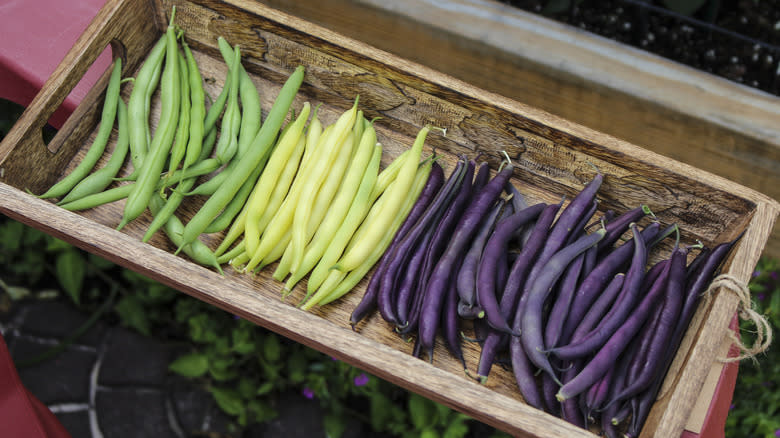
The rainbow of green beans goes well beyond green. Wax beans are also known as yellow beans because, no surprise here, they're yellow. But don't let their golden hue fool you -- yellow beans are the same old green beans you know and love. They've just been bred to remove the green pigment. Some folks say yellow beans have a different, slightly meatier texture. But the differences are subtle, and you can use green and yellow beans interchangeably. Sometimes, it's just about aesthetics -- maybe you want to add a vibrant yellow contrast to make a dish look more appealing.
Purple beans are green beans with a purple shell that turns green when cooked. As with yellow beans, purple beans can be used like regular green beans. But they might be a little more fun -- watching the transformation from purple to green can be entertaining, especially for kids. For the adults interested in nutrition, the purple option may offer more health benefits. According to a 2017 study in the Journal of Food Quality, purple green beans retain more antioxidants after cooking than their green counterparts.
For gardeners, purple beans can add a pop of color to your veggie patch. Green beans are relatively easy to grow, and the purple varieties are much easier to spot during harvest time. They don't play hide and seek in the green foliage as well as those camouflaging green varieties.
Rattlesnake Is Just One Of Hundreds Of Green Bean Varieties
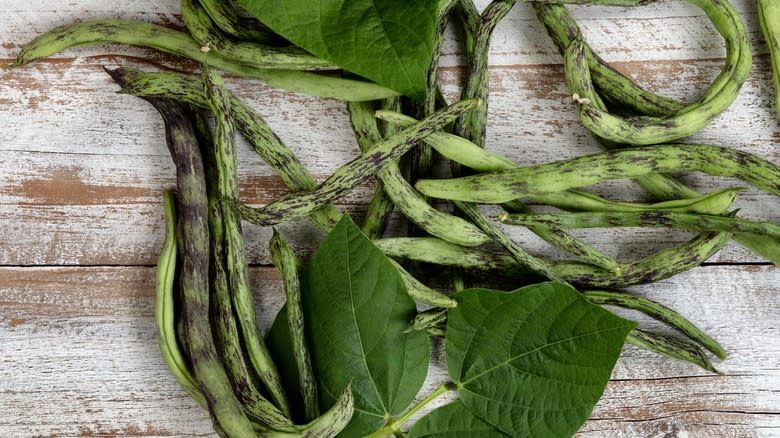
If you see a rattlesnake hanging out with green beans at the farmer's market, no need to call animal control just yet. What you're probably looking at is the rattlesnake variety of green beans. Especially if you haven't cleaned your sunglasses in a while, a rattlesnake bean, with its multicolored pod, might bear an uncanny resemblance to a serpent. But while slithering rattlers are venomous, rattlesnake beans are decidedly sweet. They make a great side dish when lightly sautéed. Or, you can show off their unique look by adding rattlesnake green beans to a salad.
While a rattlesnake green bean is an attention-grabber, it's only one of hundreds of green bean varieties. Many green bean types are actually green with no stripes. Roma II beans, sometimes called Romano beans or Italian flat beans, are firm. Their texture makes them ideal green beans for hearty soups and stews. Contender green beans look like regular green beans, but they have a stronger flavor. They taste great when pickled or used in stir-fries. Maxibel beans are French filet beans with slender, long pods of about 7 inches. Crisp and delicate, these green beans are ideal for French dishes like the classic Nicoise salad. Then there's the dependable Blue Lake 274, which offers plump pods suitable for freezing and canning. This is a consistent variety found in many of those cans at the grocery store.
Green Beans Aren't Actually Beans
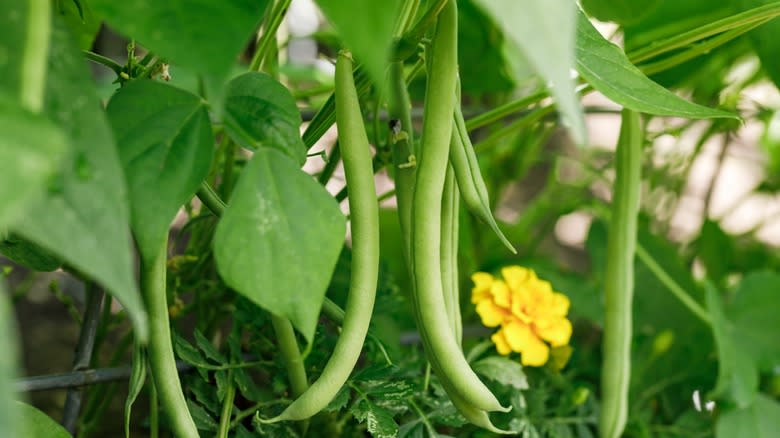
Trying to classify green beans might make you lose your appetite. Firstly, they belong to the legume family. Legumes are plants that produce seeds in pods. This includes beans like black beans, pinto beans, and kidney beans. All these beans are legumes, but not all legumes are beans. This is where the green bean comes in. Green beans come from a legume plant, but they are not the actual bean/seed portion -- they are the unripe pods themselves. We munch on the green pod before the seeds inside fully develop into beans. This makes "green beans" a bit of a misnomer. Maybe we should start calling them "green pods" instead?
The U.S. Department of Agriculture (USDA) further excludes green beans from the bean category. The USDA sorts vegetables into five subgroups: dark green; red and orange; beans, peas, and lentils; and other vegetables. In categorizing green beans, the USDA. says green beans don't fit into the "beans, peas, and lentils" subgroup because their nutrient content is more similar to vegetables in other subgroups. So, the USDA puts green beans in the "other vegetables" category, along with asparagus, Brussels sprouts, and zucchini. Then there's the question of whether green beans are vegetables or fruits, but thankfully, that's a discussion for another time.
A Campbell's Employee Invented Green Bean Casserole
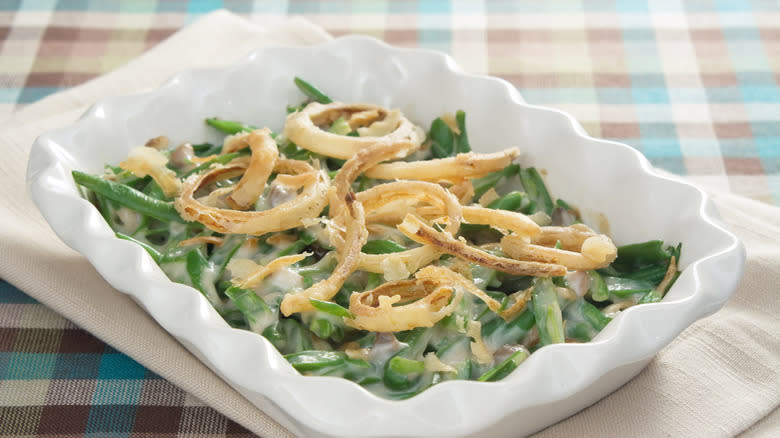
You know that creamy green bean casserole that shows up on most Thanksgiving tables, blanketed in crispy fried onions? Turns out, the recipe for that nostalgic dish gets an astonishing 4 million views on Thanksgiving Day alone, according to the Campbell Soup Company. But green bean casserole wasn't actually created to be a holiday staple. It was just an everyday side dish, invented by Campbell's employee Dorcas Reilly in 1955. Working in Campbell's Home Economics department (now the Campbell Test Kitchen), Dorcas tried out many ingredients, such as Worcestershire sauce, celery salt, and even ham before perfecting the iconic recipe. When the Campbell Soup Company slapped that recipe onto a Cream of Mushroom soup can label in the 1960s, the green bean casserole craze took over, making the dish a Thanksgiving favorite.
Today, the casserole has evolved well beyond a recipe on a soup can. People are getting pretty creative with ways to upgrade green bean casserole, from adding onion rings to making their own mushroom sauce. For instance, this Traditional Green Bean Casserole recipe swaps out the canned soup for fresh mushrooms, half and half, and chicken broth, among other tasty additions. Or, if you need something you can prep and forget for a while, Slow Cooker Green Bean Casserole might be the answer. No matter the recipe, let's be thankful to Dorcas Reilly for crafting a beloved dish that brings lots of smiles and satisfied groans of fullness.
Green Beans Used To Have Tough Strings
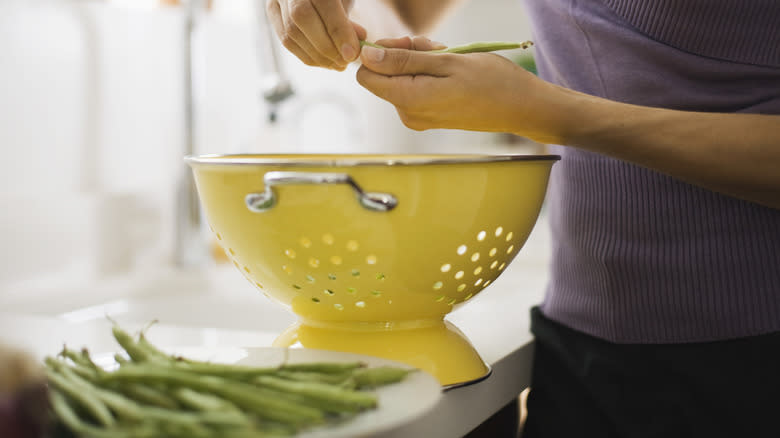
Green beans used to be high maintenance. The green pods came with tough, stringy fibers that made you work for your dinner. Standard practice was to snap off the ends, then channel your inner seamstress to pull off those stubborn strings. Only after all that could you even think about cooking them.
Thankfully, plant breeders envisioned a green bean free of strings. They spent years carrying out careful genetic planning to create a string-free green bean. Among those in on this work was the Landreth Seed Company, one of the oldest seed houses in the U.S. In 1885, the company introduced Landreth's Stringless. Calvin N. Keeney, affectionately known as the "father of the stringless bean," also developed string-free green beans in the late 1800s. These early developments paved the way for the modern stringless green beans we enjoy today. Despite all the hard work and success of these green bean breeders, though, some folks still hold onto the old nickname "string beans."
China Eats And Produces More Green Beans Than Any Other Country
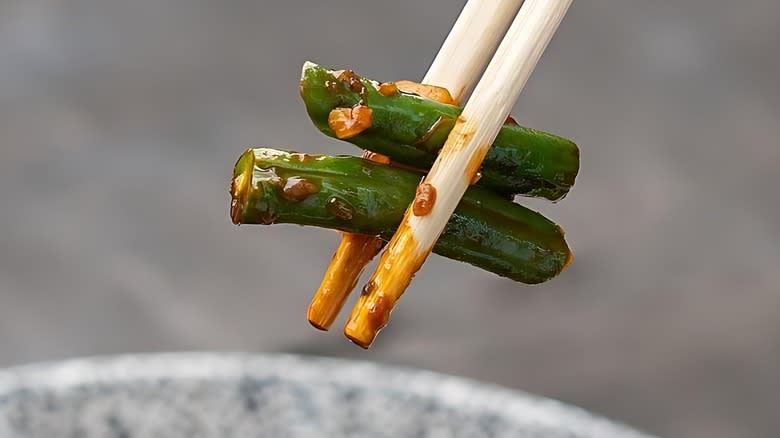
With the world's largest population, it's no surprise that China consumes and produces literal tons of green beans. According to Global Trade, China ate 21 million tons of green beans in 2019. But that's not just because there are a lot of mouths to feed -- the per capita consumption was the highest in the world. The average person in China munches through 30 pounds of green beans each year. Compare that to Turkey, the runner-up in green bean enthusiasm, where people eat about 18 pounds annually. Indonesia comes in third with about 7.7 pounds per person. Altogether, China chows down on roughly 75% of the world's green bean supply. That's right: Three out of every four green beans grown worldwide end up on a plate in China.
With such a large country and a vast and varied culinary landscape, you might say there's no such thing as "Chinese food." But you're sure to find green beans in many delicious dishes there, from spicy Szechuan green beans to hoisin ginger noodles. Or, if you're looking for ways to upgrade your homemade lo mein, toss in some green beans and other veggies for a tasty and healthy option. The next time you're enjoying green beans, just remember -- somewhere in China, someone is probably doing the same!
French-Cut Green Beans And French Green Beans Aren't The Same Thing
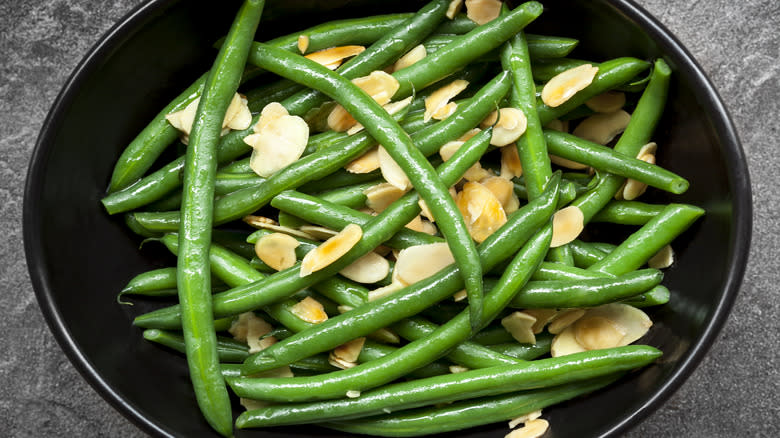
"French-cut green beans" and "French green beans," not to mention "French style green beans," can easily cause some green bean confusion thanks to their similar names. French-cut green beans refer to a slicing technique, not a special variety of green beans. When you French-cut green beans, you're thinly slicing them lengthwise into elegant, slender strips. Also known as a julienne cut, this method can be applied to any green bean, not just the ones from France. French-cut green beans reduce cooking time and enhance aesthetic appeal. You might also spot these thin slices in cans labeled "French style green beans." No matter how fancy the label is, remember: They're just regular green beans with a special cut.
French green beans are a specific variety of green beans. They're also known as haricots verts. Even though "haricots verts" translates quite simply to "green beans," these aren't your average green beans. They're slightly sweet and typically thinner, longer, and more tender than common American varieties. Popular in French cuisine, they're often served whole to highlight their finer qualities. Bon appétit!
Canned Green Beans Are Impressively Popular In The U.S.
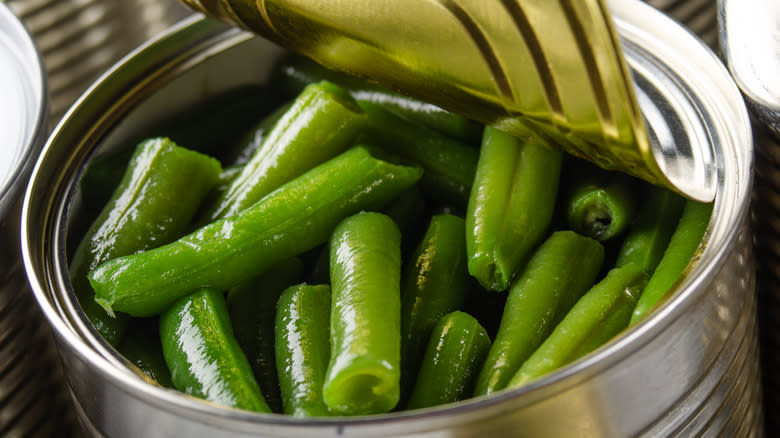
Green beans have an impressive fan base. According to 2024 data from YouGov, most people have a positive opinion of green beans. They're one of the easier vegetables to grow in your yard and are widely available for purchase. Since these overachieving vegetables flourish year-round, you can almost always find fresh green beans at grocery stores. Or, you can snag them at farmer's markets during their peak season from May to October and enjoy them at their absolute freshest.
No matter the time of year, you can readily find canned green beans. You know the ones -- they're probably tucked away in your pantry right now, or if not, you can bet your neighbor has a stash. Wakefield Research tells us that nearly 80% of Americans stock canned veggies, with green beans and corn in a tight race for the most popular pick. There's no denying the cost and convenience of canned green beans. But since they can sometimes look and taste like they've had a rough day, explore the many ways to take canned green beans to a new level, such as cooking them with a bit of lemon or sautéing them in sesame oil.
Presidents Celebrate Holidays With Green Beans
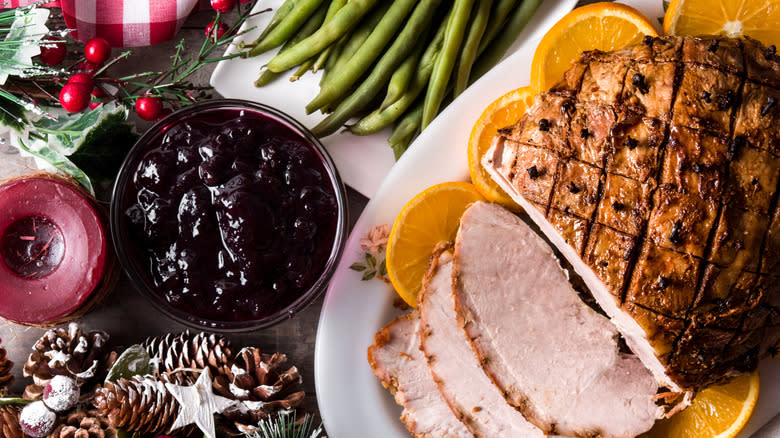
In a country so often divided, green beans present an opportunity to find common ground. Regardless of political party, many of our nation's leaders have celebrated holidays with green beans on the table. Bill Clinton's 1993 Christmas dinner (complete with syllabub, a delightfully archaic beverage), George W. Bush's 2007 Christmas lunch at Camp David, and Barack Obama's 2011 Christmas in Hawaii all included green beans.
But perhaps the most endearing green bean anecdote comes from the Carter family's 1977 Thanksgiving menu. Asked to review the proposed menu, former First Lady Rosalynn Carter crossed out "green peas" and added a note explaining, "Jimmy doesn't especially like green peas." She then wrote in a suitable replacement: "Green beans, but not frozen ones." One can't help but imagine the Camp David staff scrambling to source the freshest, crispest green beans for the leader of the free world. After all, when the president speaks (or, in this case, when his wife speaks for him), people listen.
Green Beans May Increase Breast Milk Production
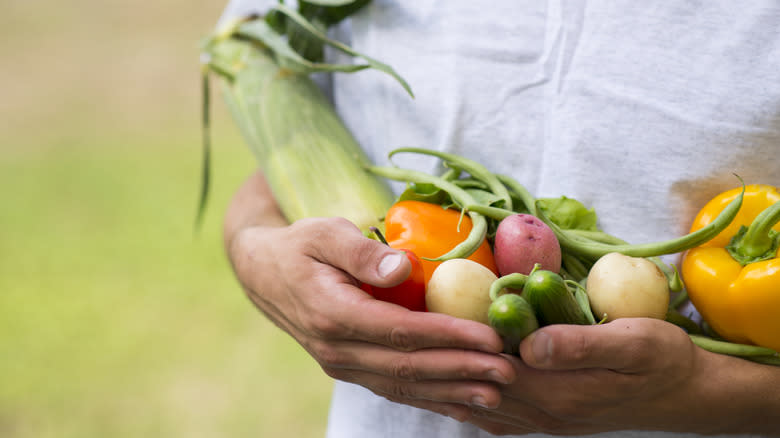
Green beans are low in calories and carbs yet packed with antioxidants, full of fiber for heart health and gut health, a great source of vitamin K and calcium -- and this is just the start of a long list of health benefits. Add to that list this fact: Green beans might be magic beans for expectant and new parents. Just one cup of green beans gives you about one-third of the daily recommended amount of folate, a B vitamin that's crucial to fetal development.
Then, when it's time to celebrate your little one's arrival, green beans might offer a lactation boost. Several studies show that green beans help with breast milk production. According to a 2020 study in the Journal of Midwifery, the polyphenols and flavonoids found in green beans can bump up the hormone prolactin, which is crucial for milk secretion. A 2022 study in the Journal of Sexual and Reproductive Health Sciences experimented with green bean juice, finding that it can increase the volume of breast milk in new moms. So, don't forget to keep Mom's plate full of green beans -- feeding time isn't just for babies!
Read the original article on Mashed

 Yahoo Lifestyle
Yahoo Lifestyle 
